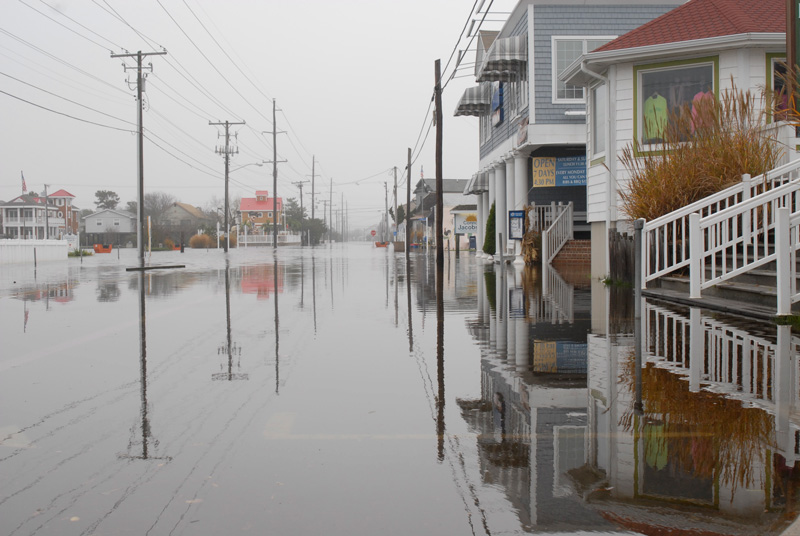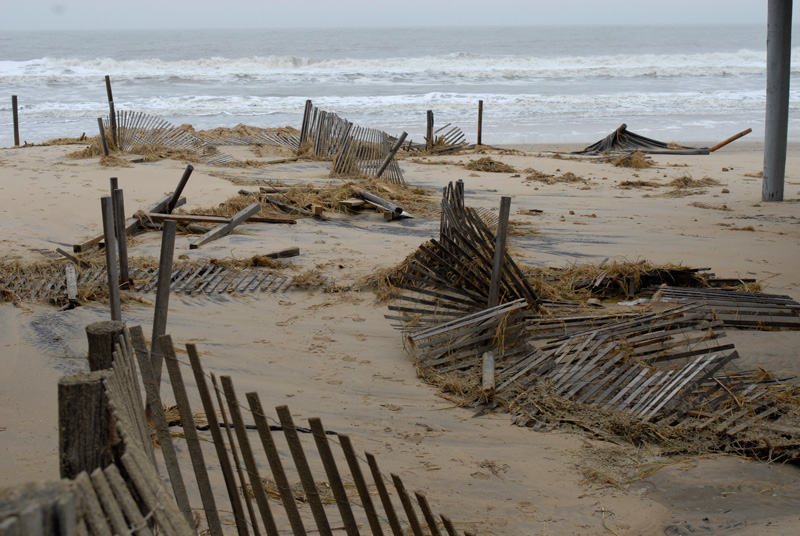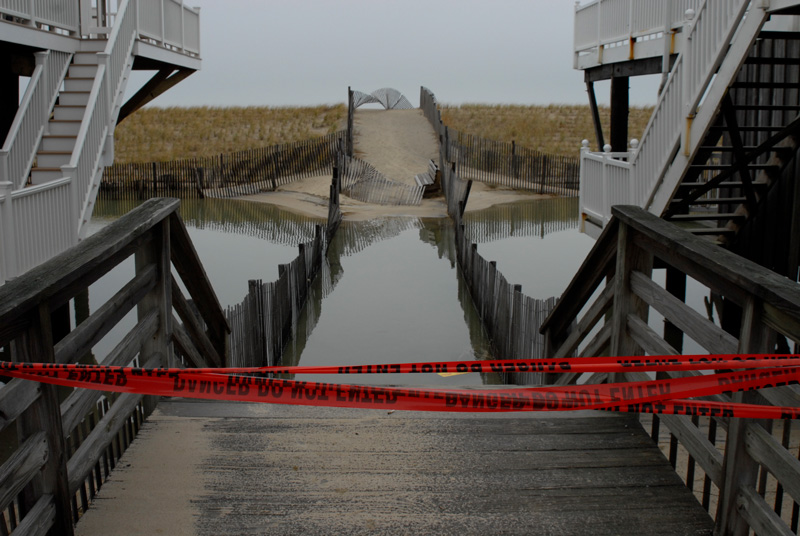


Threat multiplier
Photos by Lisa Tossey April 17, 2019
UD experts share information on climate change, community risk assessments
All three counties in Delaware have their own risks and are facing their own unique challenges when it comes to climate change and sea level rise.
To help keep community leaders, representatives from non-profit organizations and private sector consultants up to date on those risks and how to best manage them, the Delaware Geological Survey’s John Callahan and Danielle Swallow from Delaware Sea Grant presented information at the National Oceanic and Atmospheric Administration’s (NOAA) Climate Adaptation Planning training meeting held recently in Dover.
The purpose of the class was to provide hands on training to community leaders and state agency outreach specialists on the steps involved in adaptation planning.
Callahan gave a talk on observations and projections for climate change and sea level rise in Delaware while Swallow gave a presentation on how to best manage and plan for these threats by showing a vulnerability risk assessment she led for the town of Slaughter Beach, which she conducted prior joining Delaware Sea Grant.
The event was co-sponsored by Delaware Sea Grant and the Delaware Department of Natural Resources and Environmental Control (DNREC). Both Delaware Sea Grant and the Delaware Geological Survey are based in the University of Delaware’s College of Earth, Ocean and Environment.
Swallow, a coastal hazards specialist, said community leaders often will assess their community or particular infrastructure in their community, such as a roadway, to look at how that asset is exposed to climate change or sea level rise over time to identify the vulnerability.
“Once they identify the vulnerability, they work to identify mitigation and adaptation strategies to reduce risk,” said Swallow. “Our training was to help communities understand climate risks going forward and how to assess their community’s or infrastructures’ exposure to these risks and then to plan for that.”

For the town of Slaughter Beach, Swallow said the community only has two roads in and out of town and both roads are vulnerable to flooding, with one flooding at extreme high tides, which is directly related to sea level rise.
“During major storm events, that community can get cut off from access to Route 1, and so that affects their ability to get school buses down the street to pick up kids for school. It affects them if they need to get to the hospital or a doctor’s office or even to pick up groceries,” said Swallow.
Callahan, an associate scientist and climatologist with the Delaware Geological Survey, said that while it’s easy to see the effects of climate change at the coast with flooding, there are also many other effects that often go overlooked.
“In Delaware, it’s affecting lots of areas,” Callahan said. “It has an effect on agriculture because as the world gets warmer, the growing season increases, which could be viewed as a positive change, but also water and energy demands increase as do heat waves and potential issues with weeds and insects on the crops. We’ve seen correlations in public health, such as with the elderly and small children, or people with asthma or other kinds of diseases that would likely increase due to heat stress as the temperature rises.”
When the sea level rises, it also means that the groundwater table is rising throughout the coastal regions of the state, which causes forests to lose trees and makes agricultural fields unable to be sowed.
“Some of those trees can’t survive if their roots are constantly inundated with water,” Callahan said. “Same with the agriculture fields. If that water gets up into the root zone or close to it, it’s not sustainable, and these are observations we’ve already seen in Delaware.”
In Wilmington, not only is the city vulnerable to flooding from rising sea levels and heavy rains, but the increase in temperatures make it also susceptible to the urban heat island effect, where an urban area is significantly warmer than its surrounding rural areas due to human activities and types of land cover. This can lead the citizens of the city, specifically the homeless and elderly populations, vulnerable to heat stress.

Callahan said that while Delaware is doing a good job at the state level, both supporting research and helping people, communities, and emergency managers, more can be done.
“We need to do more locally, especially with the towns along the coast because they see these impacts first hand,” said Callahan.
The key for town managers and planners isn’t just building infrastructure to withstand current storms or what damage has occurred from climate change in the past, it’s making sure to plan for what storms and climate change are going to look like in the future.
“Many of these problems are not going to get better,” Callahan said. “They’re not going to stop. Sea level rise and climate change in general, is what the U.S. military calls a threat multiplier. A lot of the problems we see now can be multiplied from the additional stresses of increased temperatures and rising seas in the future. It’s all pointing in the same direction.”
Contact Us
Have a UDaily story idea?
Contact us at ocm@udel.edu
Members of the press
Contact us at 302-831-NEWS or visit the Media Relations website

